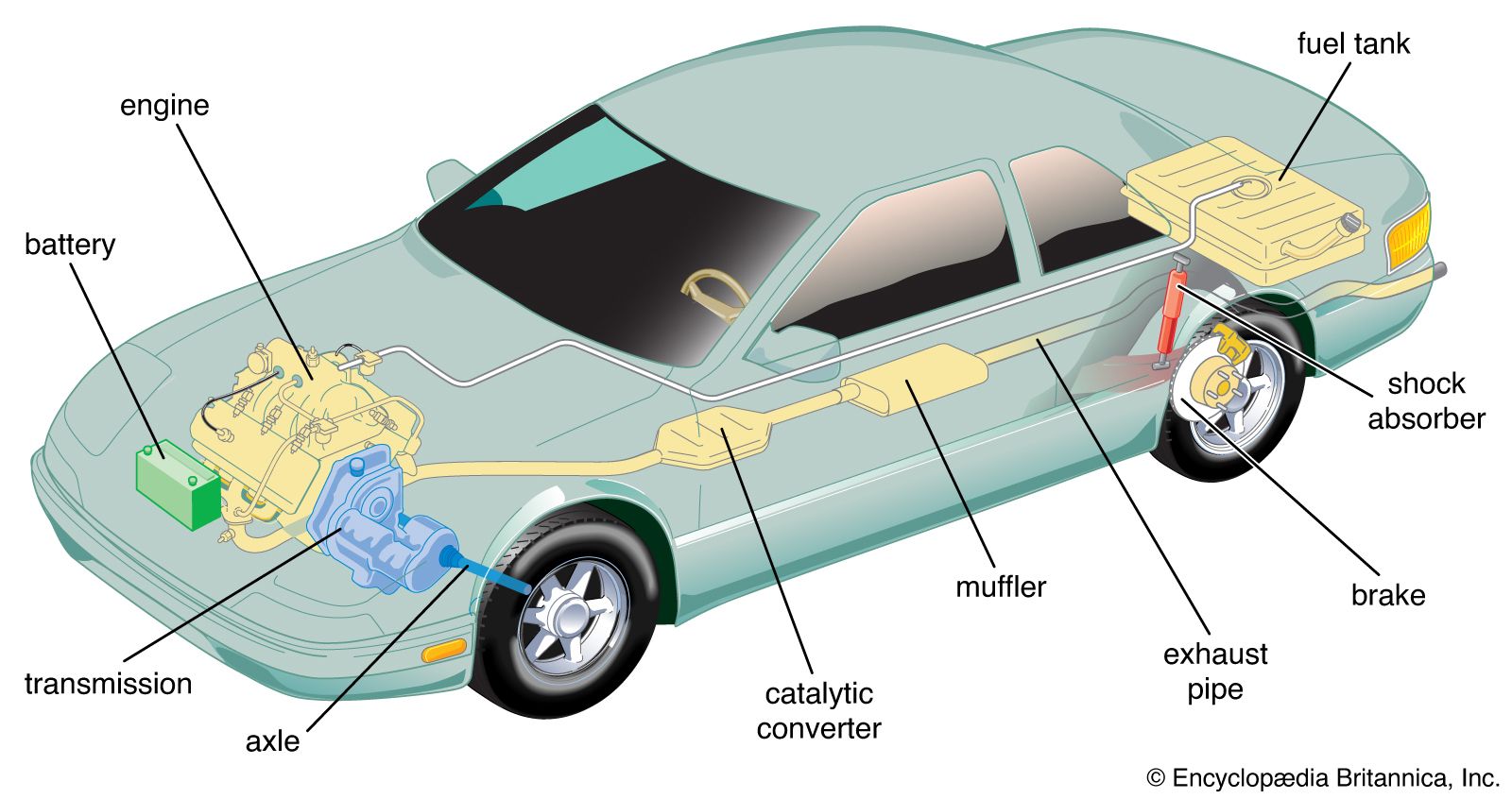
What are automobiles' definition, history, and design basics

The automobile has transformed the way we live, work, and travel. With billions of cars on the road, understanding how to automobile becomes increasingly essential. This article explores the definition of automobiles, traces their history, and delves into the design basics that underlie their functionality and efficiency.
From the scientific car innovations of the early 20th century to the sophisticated vehicles of today, the evolution of the automobile in modern society showcases the remarkable interplay between technology and creativity. As we venture further into the science of a car, we'll also consider how emerging trends and regulations impact design and manufacturing processes.
- Definition of Automobiles
- Brief Overview of Automobile History
- Evolution of Automobile Technology
- Key Components of Modern Automobiles
- The Impact of Regulations on Vehicle Design
- Understanding Vehicle Design Basics
- The Role of Subsystems in Automobiles
- Trends in Automobile Manufacturing
- Conclusion: The Future of Automotive Design
Definition of Automobiles
An automobile is defined as a self-powered vehicle typically designed for transporting passengers on land. Most automobiles are equipped with four wheels and are driven by an internal combustion engine or electric motor. They are engineered to operate on a variety of surfaces and generally include passenger cars, trucks, buses, and vans.
Automobiles have evolved from simple horse-drawn carriages to the complex machines we see today, integrating advanced technologies and electronic systems. This evolution reflects not only advancements in engineering and design but also changing consumer demands and environmental considerations. The automobile in its essence serves as a facilitator of mobility, enhancing personal freedom and reshaping urban landscapes.
Brief Overview of Automobile History
The history of the automobile dates back to the late 19th century, when inventors began experimenting with steam-powered vehicles. However, it was the development of the internal combustion engine that truly accelerated automobile production. Notable figures such as Henry Ford revolutionized manufacturing with the introduction of assembly line production in 1913, making cars more accessible and affordable to the general public.
Throughout the 20th century, automobiles became a symbol of progress and prosperity. The introduction of safety features, such as seat belts and airbags, alongside stricter regulations, changed how automobiles were designed and manufactured. This transformation laid the groundwork for the modern automobile industry, where quality, safety, and efficiency are paramount.
Evolution of Automobile Technology
As we examine the evolution of automobile technology, we find that advancements have affected every facet of vehicle design. From the introduction of automatic transmissions to innovations in electric and hybrid vehicles, technology has continually pushed the boundaries of what is possible in automotive engineering.
The advent of electronic systems has led to significant improvements in vehicle performance, safety, and comfort. Systems such as anti-lock brakes and electronic stability control have become standard in modern vehicles, enhancing driver control and accident prevention. Furthermore, the rise of software and connectivity in vehicles has given birth to the concept of the "smart car," exemplifying the integration of technology into automotive design.
Key Components of Modern Automobiles
Modern automobiles consist of several key components that work together to ensure functionality and efficiency. Understanding these components is crucial for anyone interested in the science of a car.
- Engine: The heart of the automobile, responsible for converting fuel into motion.
- Transmission: The system that transmits power from the engine to the wheels, allowing for speed variations.
- Chassis: The underlying framework that supports various components, including the engine, transmission, and body.
- Suspension: The mechanism that absorbs shock and maintains stability while driving.
- Brakes: Critical for safety, they allow for controlled stopping of the vehicle.
- Electrical Systems: Encompassing everything from lighting to infotainment systems, these are essential for modern vehicle functionality.
The Impact of Regulations on Vehicle Design
The impact of regulations on vehicle design is profound and ever-evolving. Governments impose safety and emissions standards to protect occupants and minimize environmental harm. These regulations ensure that manufacturers prioritize safety features, fuel efficiency, and reduction of harmful emissions in their designs.
For example, the introduction of stricter fuel economy standards prompted automakers to innovate and incorporate advanced technologies into their vehicles. This includes the production of electric vehicles and more fuel-efficient combustion engines that demonstrate a commitment to reducing the carbon footprint of automobiles.
Understanding Vehicle Design Basics
Understanding the vehicle design basics is crucial for anyone looking to delve deeper into the world of automobiles. Key principles include aerodynamic efficiency, weight distribution, materials selection, and user interface design. Each aspect plays a significant role in the overall performance and appeal of the vehicle.
Aerodynamics
Aerodynamics affects fuel efficiency and performance; a well-designed vehicle minimizes drag, allowing for smoother travel. Automakers utilize wind tunnel testing to refine shapes and surfaces for optimal airflow.
Materials Selection
Incorporating lightweight yet strong materials enhances durability while improving fuel efficiency. Materials such as aluminum and high-strength steel are increasingly used in modern automobile construction.
User Interface Design
The design of dashboards and controls is vital for user experience. A well-thought-out interface contributes to driver comfort and safety, allowing for easy access to critical information without distractions.
The Role of Subsystems in Automobiles
Each automobile is composed of numerous subsystems that work together to deliver functionality and performance. Understanding the role of each subsystem is essential for grasping how modern vehicles operate.
- Powertrain: Comprising the engine, transmission, and drive systems, the powertrain is responsible for generating and transmitting power.
- Electrical System: This subsystem manages all electronic components, including battery maintenance, power distribution, and the vehicle's communication network.
- Braking System: An essential safety subsystem, ensuring that the vehicle can effectively stop under various conditions.
- Climate Control: This subsystem maintains passenger comfort, regulating the internal climate of the vehicle.
- Infotainment System: Increasingly integral, providing entertainment, navigation, and connectivity features to enhance the driving experience.
Trends in Automobile Manufacturing
As we examine current trends in automobile manufacturing, it is evident that innovation and sustainability are at the forefront. The shift toward electric vehicles, autonomous driving technologies, and advanced manufacturing processes such as 3D printing are reshaping the industry landscape.
Furthermore, the demand for smart features and connected vehicles continues to rise, prompting manufacturers to explore new avenues for integrating technology and enhancing the user experience. The focus on sustainability drives advancements in material choices and manufacturing practices that prioritize environmental conservation.
Conclusion: The Future of Automotive Design
As we conclude our exploration of the automobile, it is clear that the future of automotive design will be heavily influenced by technological innovation and changing consumer demands. From advancements in electric and hybrid technologies to the integration of smart systems and materials, the industry is poised for significant transformations.
As we look ahead, understanding how to automobile, the science of a car, and the intricate details of automobile design will become increasingly important. Acknowledge how these developments not only shape the future of individual vehicles but also the broader impact on society, the environment, and our global economy.
Did you find this article helpful? What are automobiles' definition, history, and design basics See more here Education.
Leave a Reply






Related posts